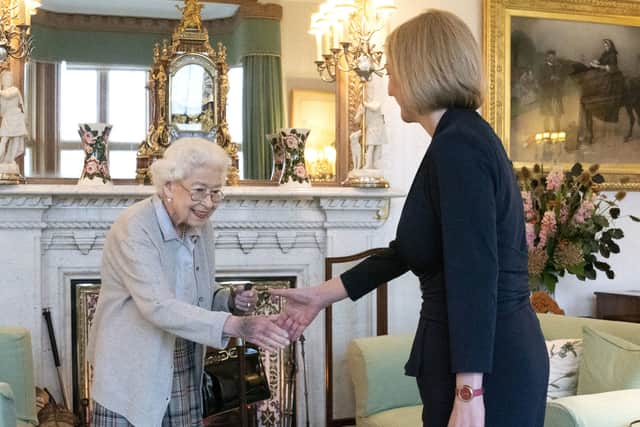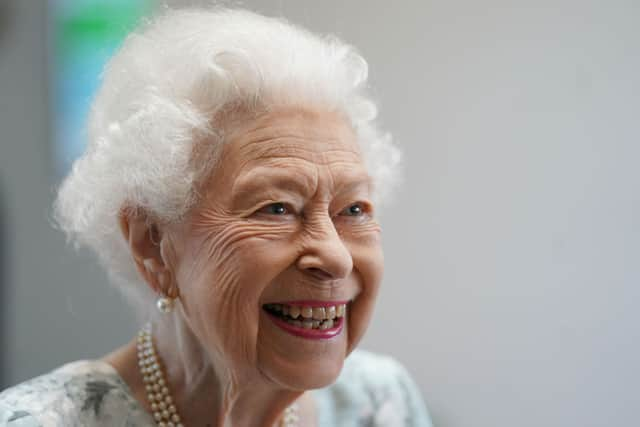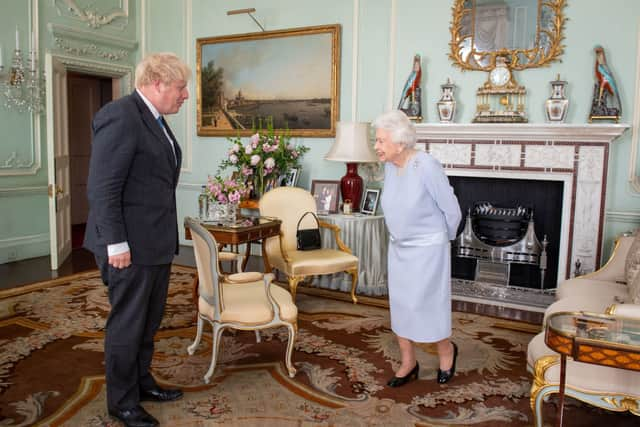Can the Queen refuse a prime minister? Queen’s power to reject an incoming PM explained - has it ever happened
and live on Freeview channel 276
New Prime MinisterLiz Truss has been officially appointed by the Queen today (6 September) ahead of her first official speech as PM in Downing Street this afternoon.
Her appointment at Balmoral Castle comes after 81,326 Conservative Party members - less than 0.2% of the electorate - chose her to be their new leader over Rishi Sunak.
Advertisement
Hide AdAdvertisement
Hide AdMs Truss becomes the fifteenth UK PM to have served under the monarch during her 70-year reign.
But could the Queen refuse to grant an incoming Prime Minister their office?
Here’s everything you need to know.


How are Prime Ministers appointed by Queen?
Up until today, the Queen had appointed Prime Ministers at Buckingham Palace - a 10-minute drive away from Downing Street.
But due to what the Palace described as mobility issues, the outgoing and incoming PMs have both had to meet her at Balmoral Castle - 500 miles away near Aberdeen, Scotland.
Her Majesty greeted both of them in Balmoral’s drawing room
Advertisement
Hide AdAdvertisement
Hide AdWhilst the location of the ceremony is very different from usual, the process was broadly similar.
The Queen asks the incoming Prime Minister if they will form a government.
After the new leader says ‘yes’ to this invitation, the pair shake hands in what is known as the "kissing of hands" ceremony.


A Court Circular - an official document containing major news about the Royal Family - is then sent out that says this has happened.
Advertisement
Hide AdAdvertisement
Hide AdDuring the ceremony, the new PM and the Queen will have a brief chat, the contents of which are unlikely to ever be revealed.
But this discussion is likely to focus on the issues of the day, which means the monarch and PM will probably talk about the cost of living crisis and the Russia-Ukraine war.
The other major difference between today’s ceremony and previous ones was the amount of time the Queen held executive power for.
Typically, only a matter of minutes pass between the departure of a Prime Minister and the appointment of a new one.
Advertisement
Hide AdAdvertisement
Hide AdBut today, the Queen held the UK’s executive power for more than an hour.
Can the Queen refuse a Prime Minister?
Even though the title has become more of a ceremonial role over the past century, the Queen is the UK’s official head of state.
The Royal Prerogative, as it is known, means she is seen to be the ultimate source of the government’s executive power by the people of the United Kingdom, as represented through Parliament.
It means it is her duty to appoint new Prime Ministers.
But given the UK is a democracy, it is up to people in the UK to elect PMs.
Advertisement
Hide AdAdvertisement
Hide AdUnder what are known as reserve powers, the monarch can grant pardons, dismiss a PM, refuse to dissolve Parliament and refuse or delay royal assent to legislation.
So, technically, the Queen could refuse to appoint a PM.


To do so would not only be a big break from the Queen’s modus operandi of keeping outside of day-to-day politics, but it would also cause a constitutional crisis.
This is because the UK has an unwritten constitution largely based on historical precedent.
If the general public were to lose faith in this arrangement between the state and the crown it would undermine the government and its institutions, leading to total upheaval of the UK’s political system.
Has a UK monarch ever dismissed a PM?
Advertisement
Hide AdAdvertisement
Hide AdHowever, it took place at a time when the lines between the crown and executive power were slightly more blurred.
In 1834 William IV - Queen Victoria’s uncle and predecessor as monarch - dismissed Lord Melbourne’s Whig government.


It came against a backdrop of Parliamentary turmoil and at a time when the UK public had less of a say in politics but were clearly angered by how they were being governed.
Advertisement
Hide AdAdvertisement
Hide AdThis event came only three decades after the French Revolution, when the French people overthrew the monarchy in favour of a republic.
The question of whether the Queen could intervene in who leads the country came to the surface in 2019 when Boris Johnson unlawfully prorogued Parliament in an attempt to push Brexit through - an action that involved him lying to the UK’s current monarch.
Comment Guidelines
National World encourages reader discussion on our stories. User feedback, insights and back-and-forth exchanges add a rich layer of context to reporting. Please review our Community Guidelines before commenting.
